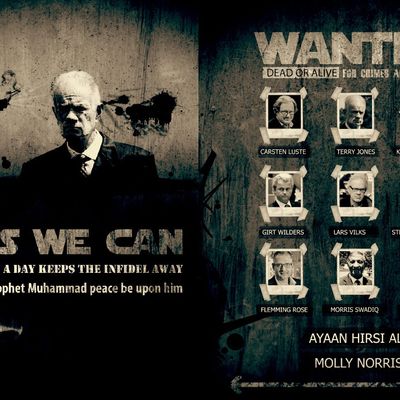
In 2013, Stéphane Charbonnier, the French cartoonist and publisher of Charlie Hebdo who was gunned down in a terrorist attack last week, was featured alongside ten others in a spread in English-language jihadi glossy mag Inspire. The nine men and two women appeared under the headline of “Wanted: Dead or Alive for Crimes Against Islam.” (The women’s names were published without images, presumably because they don’t wear the hijab.) On the other half of the spread, one of the targets, Florida pastor Terry Jones, appeared with his signature sideburns. A gun had been stenciled in near his head, with an exit wound on the other side. Text underneath the image reads: “Yes we can. A bullet a day keeps the infidel away. Defend Prophet Mohammed peace be upon him.”
Like Charb, the French cartoonist, most of these individuals were outspoken critics of Islam, or at least certain parts of the faith. They had all committed at least one action Islamist groups consider to be worthy of death. Many had been threatened before, but until last week, none of the 11 had been killed. (On Wednesday, Al Qaeda in the Arabian Peninsula, the organization which spawned Inspire magazine, claimed responsibility for the attack.)
Daily Intelligencer looked into the lives of the other ten people on the Inspire hit list. Below, you can see why they became one of radical Islam’s most wanted, and how they have reacted to living under the shadow of a death threat.

Ayaan Hirsi Ali: Somali-born activist Hirsi Ali had a brief stint as a Dutch member of parliament before moving to America, where her story became a cause célèbre for right-wing politicians and media figures. At the age of 5, she was forced to undergo female genital mutilation by her grandmother, despite opposition by her father. (Now opposition to the practice is one of the issues she champions.) She briefly sympathized with Islamist movements as a young woman, but later became a staunch atheist. Hirsi Ali became infamous for collaborating with Dutch filmmaker Theo van Gogh on a film criticizing the treatment of women in Islam. Van Gogh was assassinated in 2004. Since moving to America, Hirsi Ali has married Harvard economist Niall Ferguson and written two autobiographical books.
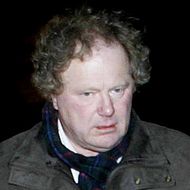
Carsten Juste: The Danish journalist was formerly editor-in-chief of Jyllands-Posten, the paper that drew international ire for publishing blasphemous cartoons of the prophet Muhammad in 2005. He left his post in 2008, and — despite having apologized for the cartoons — remains the target of many death threats. “The 12 cartoons … were not intended to be offensive, nor were they at variance with Danish law, but they have indisputably offended many Muslims, for which we apologize,” he said in 2006. Juste has kept a relatively low profile since resigning as head of the publication, but sat down with his home paper for an interview (paywalled) last April.
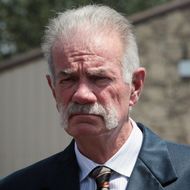
Terry Jones: Jones landed on the hit list for his many anti-Islam stunts, including incidents of burning the Quran. In one stunt, Jones sought to burn nearly 3,000 copies of the book, one for “every person who was murdered by Islam” on 9/11. This Florida pastor turned political activist (and politician — he “ran” for president in 2012, and plans to do so again in 2016) has also found a new calling: Since November, he’s been scooping fries at a stand he opened in the food court of Florida’s DeSoto Square Mall. A local paper reported that the mall hadn’t previously been aware of Jones’s notoriety, and that he had been a good tenant. Jones, though, continues to speak out against Islam, which he calls “a very oppressive religion.” Local authorities keep tabs on his safety, but, it appears, not very closely.

Molly Norris: Norris left her job at the Seattle Weekly and disappeared in 2010, when Inspire magazine founder (and American cleric) Anwar al-Awlaki targeted her for creating Everybody Draw Mohammad Day. (She also took on this task, drawing the prophet as a number of different household items.) Norris hasn’t been heard from since “going ghost,” and Larry Kelley, the president of a foundation fighting for her, said that “she had to completely change her identity, disappear from her work.”

Flemming Rose: As culture editor of Jyllands-Posten, the Danish paper, Rose was primarily responsible for the controversial cartoons of Mohammed it published in 2005. Despite numerous threats, Rose remains active: He continues to work as a journalist, traveling the world and contributing to publications including the New York Times. (In December, he wrote an op-ed piece about the Sony hacks and standing up to terrorism.) Now Rose is the editor of that same newspaper, Jyllands-Posten, and is scheduled to speak about freedom of speech in Boston later this month. His book, The Tyranny of Silence, was put out by the CATO Institute last year.

Salman Rushdie: Perhaps the most well-known victim of modern-day Islamist fatwas, Rushdie was condemned by Iran’s Ayatollah Ruhollah Khomeini on Valentine’s Day, 1989. The precipitating factor was his novel, The Satanic Verses, because the title and other elements of the text were viewed as insults to the prophet. Rushdie issued a half-apology, saying, “I profoundly regret the distress that publication has occasioned to sincere followers of Islam.” But this didn’t appease the ayatollah. (The fatwa remained, and now that Khomeini is dead, there are conflicting opinions over whether someone else can lift the order on his behalf.) This doesn’t seem to have slowed Rushdie down, though: He’s been through three wives since becoming a marked man (and one before that), frequently appears as a commentator on television shows, and has published five more novels and two children’s books.
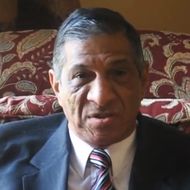
Morris Sadek: An Egyptian-American Coptic Christian, Sadek earned his spot on the Inspire list for promoting the controversial 2012 film, The Innocence of Muslims. The poorly shot video was widely perceived as inaccurate and offensive, and famously dubbed in some of the most controversial lines in postproduction, leaving the unsuspecting actors bewildered. Sadek promoted the movie — created by another U.S.-based Coptic Christian — on his site, and these actions contributed to massive protests against the movie in Muslim-majority countries. Sadek remains head of the small National American Coptic Assembly, according to the group’s websites, but has been denounced by many mainstream Coptic leaders.
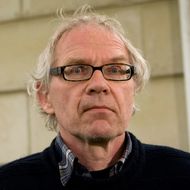
Lars Vilks: The Swedish cartoonist became famous, like many on this list, for creating images of the Prophet Muhammad. In Vilks’s case, the cartoons in question — published in July of 2007, after several galleries refused to show them — depicted the prophet as a dog. Three U.S. citizens tried to assassinate Vilks in 2009, and since then he has been living under police protection. (Nonetheless, he’s been the subject of several subsequent physical attacks and assassination plots.) Vilks maintains a Swedish-language website, which describes him as a “conceptual artist, a painter, and sculptor.”
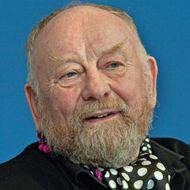
Kurt Westergaard: This Danish cartoonist is the pen behind Jyllands-Posten’s most controversial 2005 cartoon, depicting a surly, bearded Prophet Muhammad with a bomb-shaped turban on his head bearing the Muslim declaration of faith. The 79-year-old was not particularly remorseful after his cartoon caused an international outcry. “As I see it, many of the immigrants who came to Denmark, they had nothing. We gave them everything — money, apartments, their own schools, free university, health care,” he told the National Post a few years later. “In return, we asked one thing — respect for democratic values, including free speech. Do they agree? This is my simple test.” Since 2005, he’s been the target of multiple assassination attempts, and his house has been outfitted with many security measures.

Geert Wilders: Far-right Dutch politician Geert Wilders has made a career of demonizing Islam and its practitioners. In one of his most notorious actions, he called for an absolute ban on the Quran in the Netherlands, comparing it to Mein Kampf and calling it a “fascist” book. Wilders appears undeterred by the many threats he has faced, though, and even put out an autobiography mocking the extremists, Marked for Death, in 2012. Before he appeared on Al-Qaeda’s well-circulated hit list, Wilders was marked as a target by Australian preacher Feiz Mohammed, who called the politician “evil filth.” Polls show that the attack on Charlie Hebdo has only served to boost the popularity of Wilders’s own far-right Freedom Party in the Netherlands.





























